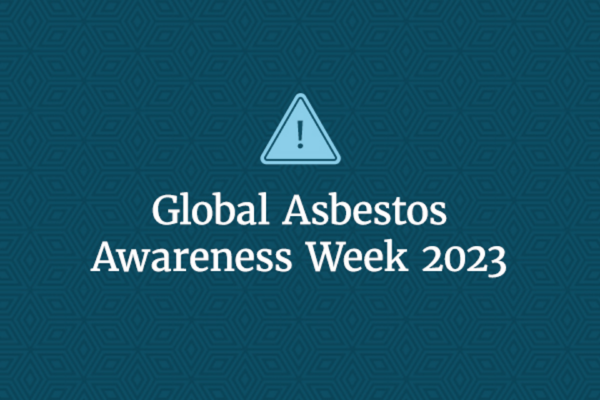
Since 2005, Global Asbestos Awareness Week (GAAW) has been observed April 1 – 7 to raise awareness about the dangers of asbestos. Participants share information about possible effects of asbestos exposure all over the world. They also work with government organizations to advocate for stricter regulations and safety laws.
As of late 2022, nearly 70 countries have banned asbestos use. But many more, including the United States, have not. GAAW promotes education, prevention and action to help end the use of asbestos worldwide.
Asbestos Exposure Still a Global Risk
While restrictions and regulations have increased over the years, global mining of asbestos continues in many countries. In 2022, asbestos mines produced approximately 1.3 million metric tons of the mineral worldwide. Recent data indicates annual global consumption of asbestos is about 1.2 million tons.
Despite evidence as early as the 1960s that asbestos exposure can cause cancer, asbestos is still mined and used in various products worldwide. Asbestos-related diseases kill about 200,000 people globally each year. Most of these deaths are a result of work-related exposure. However, the number may actually be higher as cases can go undiagnosed and be misreported.
Asbestos Use in the United States
The U.S. still does not have an asbestos ban.
The chloralkali industry has accounted for most of the asbestos fiber consumption in the U.S. since at least 2015. In addition to raw asbestos, a small quantity of asbestos is imported annually within manufactured products.
According to the EPA, the only imported items known to contain asbestos are specific types of brake blocks, gaskets, rubber sheets for gasket fabrication and some vehicle friction products.
GAAW Organizers Push for Global Asbestos Ban
The Asbestos Disease Awareness Organization (ADAO) created the GAAW campaign in 2005. While it began as a single day of recognition, support from the government and the asbestos community turned the initiative into a week-long event.
GAAW is also a good time to support asbestos victims. Asbestos exposure can lead to serious diseases like mesothelioma and asbestosis. Because these diseases can have long latency periods, it can take years after exposure for symptoms to appear. Even if a global ban is put in place, asbestos-related diseases will continue to be a global issue for years to come. This means the sooner a global ban is enacted, the sooner asbestos diseases can start declining.
Working Towards an Asbestos-Free Future
Shaping a world where no one is at risk of asbestos will still require plenty of work. Governments, awareness organizations, medical professionals, researchers and the general population all have roles to play. But a lot of progress has been made, and GAAW is also a time to celebrate successes.
In April 2022, the EPA proposed a new rule to ban chrysotile asbestos. The rule would ban the import, distribution, manufacturing, processing and commercial use of chrysotile asbestos.
To achieve a global ban, frameworks are necessary. Two international conventions offer guidelines for asbestos bans:
- The International Labor Organization (ILO) C162 Asbestos Convention
- The United Nations (UN) Basel Convention
Countries that adopt these conventions have a head start on enacting an asbestos ban over countries that don’t.
New and improved treatments for asbestos-related illnesses continue to be researched and developed. Recent advances in treatment have helped improve outcomes for mesothelioma patients. Scientists continue to look for new and effective treatments for asbestos victims.
What Can You Do to Observe GAAW?
International organizations and governments aren’t the only ones who can help raise asbestos awareness and make a change. Every person can make a difference. A few examples of actions individuals can take include:
- Educating yourself on asbestos facts and risks
- Contacting politicians and encouraging them to pass stricter laws and regulations for asbestos
- Attending educational, awareness and fundraising asbestos-focused events
- Promoting asbestos awareness information on social media
- Signing petitions to establish national bans on asbestos
- Donating to asbestos awareness nonprofits, treatment and support groups and research organizations
Every Global Asbestos Awareness Week offers an annual opportunity to build a safer world with a brighter, asbestos-free future.







